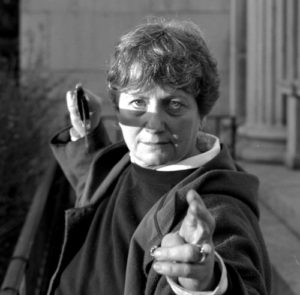Benevolence is the center and heart of all that heaven and earth create. To have searched for benevolence, come upon and possessed it, is to have hit precisely the target of all human seeking.
Professor Zheng
Zheng Manqing, however, continued what he understood as the direction of Yang Chengfu’s expression. Chengfu was a master of nurturing qi, and Zheng Manqing took this as his priority and softened the form to it’s greatest extent, maximizing it’s capacity to circulate qi and simultaneously making it even more accessible.

Zheng Manqing was born in Yungchia, Chekiang Province. He was a prodigal artist and scholar, and was a professor by the age of twenty. His time in the classroom led to illness, a severe lung impairment he says was induced through inhaling chalk from the blackboards. This ailment led him to taijiquan as a treatment, and to Yang Chengfu.
He studied with his master from 1928 to 1935. He quickly grasped the art and recovered his health. During this period, his focus shifted almost entirely to the practice of medicine and taijiquan.
After training with Yang Chengfu, Professor Zheng developed his 37 posture form. The Zheng form, although distinctly a Yang style, departed from Yang Chengfu’s form in some significant ways. The Zheng form has a medium frame, and eliminates some postures and repetition. Most characteristically, he dispensed with the upright seated or tile palm in favor of the very relaxed and uniform hand formation called beautiful lady’s hand.
Professor Zheng taught in China for about 16 years before moving to Taiwan in 1949. In 1964 he made his home in New York City. There he established a cultural center and school, each named Shr Jung, a Confucian term meaning “right timing.” He returned to Taiwan in 1974 to publish his commentary on the Yijing and passed away the following year.
Zheng Manqing taught widely, and students from China, Taiwan, the United States and elsewhere teach his style. In particular, he had a strong impact on taijiquan in the United States, and his students from the New York school spread it throughout the country. In Colorado, Professor Zheng’s strongest students were Jane and Bataan Faigao.


Jane and Bataan studied with Zheng Manqing in New York, from 1967 and 1968 respectively, until the Professor’s passing in Taiwan. They then lived and taught in Boulder, Colorado, as teachers at Naropa University and through their own school, Rocky Mountain T’ai Chi Ch’uan.
They held their teacher’s form closely, and continued to study with many of Zheng Manqing’s other accomplished students. Jane passed away in 2001, followed by Bataan in 2012. Their closest students were Beth Rosenfield and Lee Fife, who continue their teaching both at Naropa and Rocky Mountain T’ai Chi Ch’uan.
I began my study with Jane and Bataan in 1996. I studied Professor Zheng’s taijiquan form with them continually for about three years. Over the following nine years I learned the taijijian sword form, push hands, and continued to refine my understanding and practice of the taijiquan form. In this way, I practiced the Zheng form for 12 years exactly as instructed.
After this period, I began adjusting the form in two ways. First, I re-incorporated some of the Yang family techniques Professor Zheng had removed, such as the seated palm and the some of the footwork of the early masters. Second, and more significantly, I addressed the asymmetry of the Zheng form by combining it with its mirror image. Initially, this was done by simply doing the form twice: once in the traditional manner, then repeated with the postures and transitions reversed. The Single Intent short form is done in this style. The Single Intent long form, however, weaves the orthodox Zheng form with its reversals into a single sequence, following the Professor’s posture order. In these ways, although it is based on the Zheng form it is not the Zheng form; Single Intent Taijiquan is a symmetrical Yang style taiji form.
